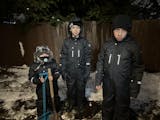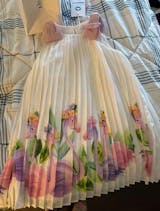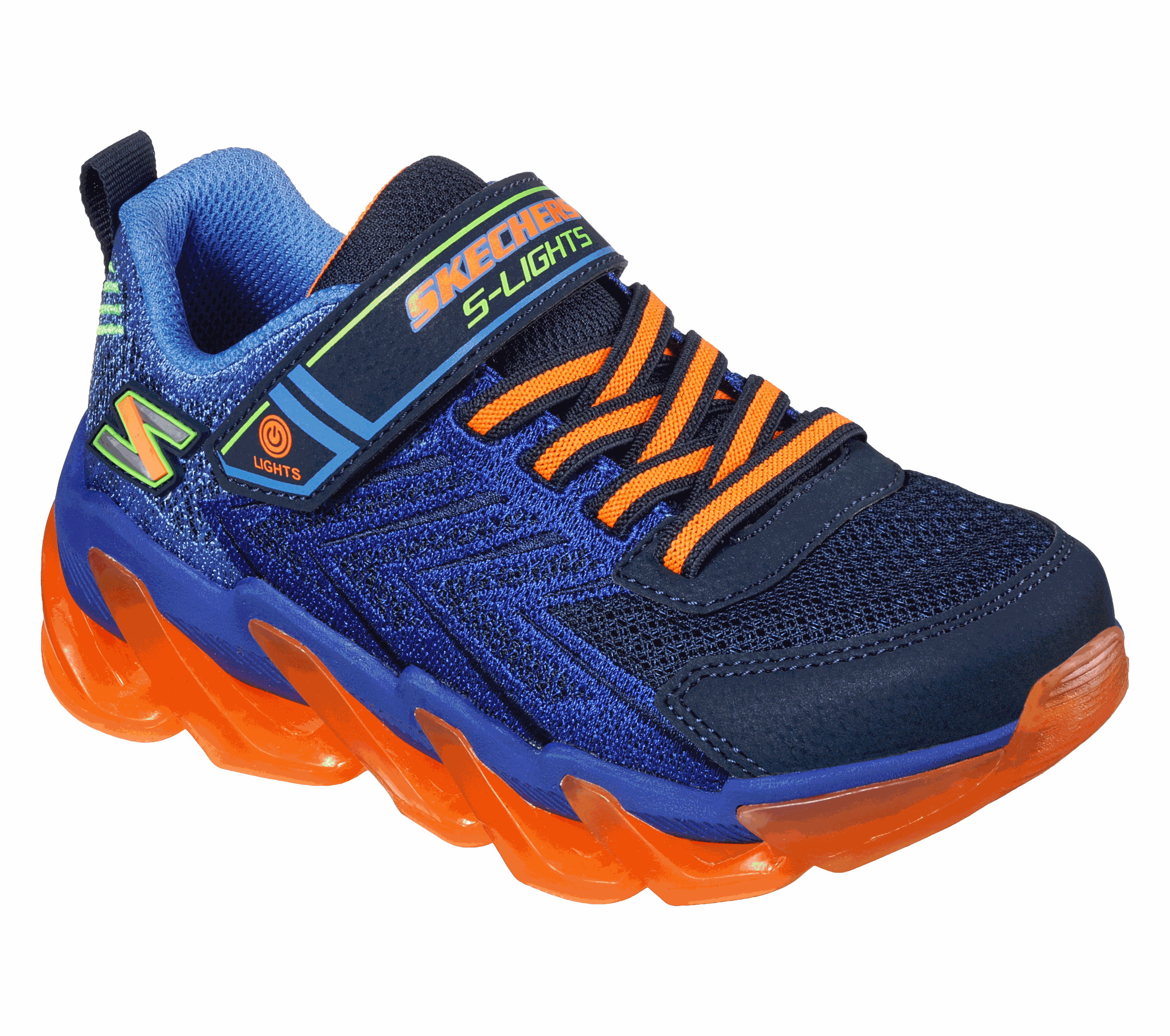Choosing a kids snowsuit shouldn’t be a coin flip. The real question is: which design keeps your child warmer, drier, and happier for how they actually spend winter? This feature-first guide breaks down insulation, waterproofing, breathability, wind defense, fit engineering, durability, and care—then maps each spec to real-world scenarios (stroller naps, preschool, recess, sled hills, ski lessons). Read once, decide fast, and head out.
Ready to gear up? Shop now with secure checkout, fast US/CA shipping, and easy returns. Low stock in popular sizes—order online today.
Quick Picks (shop by need, not guesswork)
-
For girls who play hard: curated Girls Snowsuits with warmth ratings and school-day durability.
-
For boys who never slow down: explore rugged Boys Snowsuits built for recess, sled hills, and weekend trips.
-
For babies and toddlers: cozy Baby One-Piece Snowsuits that simplify stroller days and buckle-in routines.
All picks are in stock and ready to ship across the US & Canada. Buy now to secure your size before the next cold snap.
How to Use This Guide (and Save Time)
We’ll start with the feature → benefit fundamentals that matter to both a one-piece snowsuit and a two-piece snowsuit. Then we’ll compare them by use case, cover fit/sizing and layering (with simple, kid-approved recipes), add car-seat safety tips, slush/rain strategies, durability must-haves, a decision tree, and a print-worthy checklist.

The Warmth System (why “more puff” doesn’t always mean warmer)
Staying warm is a system, not a single spec. These four defenses have to work together:
1) Low-bulk insulation (comfort near −20°C with normal layering)
Insulation traps air; bulk alone isn’t the goal. Modern, low-bulk fills keep kids comfortable around −20°C (−4°F) without turning them into marshmallows. Mobility = endurance: if kids can climb, crawl, and roll naturally, they’ll stay outside longer.
What to look for
-
Consistent loft with minimal cold-spot seams
-
Body-mapped fill (a touch more in the core, less where kids overheat)
-
Smooth lining for quick on/off over base layers
Why it matters
Over-insulating often backfires. Kids sprint, then stop. Excess bulk traps sweat, and damp insulation loses warmth fast. Low-bulk fills make layering flexible and comfy.
2) Waterproofing (because wet = cold, always)
A moisture-blocking shell with taped seams keeps slush, wet snow, and chairlift drips from soaking in. Dry insulation stays lofty; loft = warmth.
What to look for
-
Durable water repellency (DWR) that actually beads water
-
Taped critical seams (shoulders/hood/seat) or fully taped on storm-ready designs
-
Storm flaps and garages that protect zippers
3) Breathability (stop the sweat-chill cycle)
Kids generate heat like tiny furnaces. Without breathability, sweat builds up and becomes a refrigerator during rest breaks. Breathable shells let humid air escape so a kids winter suit stays warm across changing activity levels.
4) Wind defense (the invisible thief)
Wind strips heat quickly, especially from damp fabric. A wind-blocking face fabric or membrane helps maintain a warm air bubble around your child.
Bottom line: Whether you choose a one-piece snowsuit or a two-piece snowsuit (aka jacket and snow pants / two-piece ski suit), pair low-bulk warmth with waterproof/breathable shells and real wind defense.
One-Piece Snowsuit: When Continuous Coverage Wins
A one-piece snowsuit wraps from shoulders to ankles in one shell. No waist gap = fewer drafts and less snow sneaking in when little ones sit, scoot, or nap in strollers.
Strengths
-
One zipper, one-and-done dressing—ideal for daycare mornings
-
Draft-proof torso for windy, low-activity windows
-
Nap-friendly comfort for stroller and carrier rides
Trade-offs
-
Venting indoors means unzipping the whole top
-
Bathroom breaks can be trickier for independent toddlers
-
Car-seat safety requires careful attention to bulk (details below)
Best for
Newborns to 24M, stroller-heavy days, and prairie-style wind where continuous coverage beats modular flexibility.
Transactional tip: Prefer one-and-done ease? Shop one-piece snowsuits—ready to ship, fast US/CA delivery, easy returns.
Two-Piece Snowsuit: Why Jacket & Pants Win for Mobility
A two-piece snowsuit (a jacket + pants set) is the mobility and venting champion for big-kid days. Kids can unzip or remove the jacket indoors while keeping lower-body protection. Bathroom independence gets easier, too.
Strengths
-
Modular warmth control (jacket off, bib pants stay on)
-
Easier bathroom breaks at school or the lodge
-
Replace pieces separately as your child grows
-
Articulation & coverage (high-bib pants + snow skirt) keep snow out when kids jump and slide
Trade-offs
-
Waist gap risk if jacket and pants don’t overlap well (solved by high-bib pants + snow skirt)
-
More parts to track—label everything so mitts/pants make it home
Best for
Independent preschoolers and school-age kids, recess warriors, sled-hill marathons, ski lessons, and mixed indoor/outdoor days.
Transactional tip: Need venting and independence? Buy a two-piece snowsuit online—secure checkout, limited sizes, ships fast.

Feature-by-Feature: What Actually Changes Outside
Coverage & drafts
-
One-piece snowsuit: continuous coverage; no waist gap; fewer drafts on windy bus stops.
-
Two-piece snowsuit: coverage depends on overlap; high-bib pants and a jacket snow skirt are key.
Venting & overheating
-
One-piece: unzip to vent; keep an eye on indoor time.
-
Two-piece: remove or unzip jacket while pants keep snow off seats and slides.
Bathroom independence
-
One-piece: more help required for older toddlers.
-
Two-piece: simpler, faster for school and lessons.
Longevity & sizing flexibility
-
One-piece: great for the season; growth is managed via extendable cuffs.
-
Two-piece: replace pants or jacket independently; can stretch across sizes easier.
Fit Engineering (the hidden comfort multiplier)
A well-designed kids winter suit disappears while kids move—that’s the goal.
-
High-bib pants: raise coverage and seal the waist gap; suspenders distribute weight comfortably.
-
Snow skirt (jackets): an internal powder wall that stops snow from creeping up the back on slides and tumbles.
-
Articulated elbows/knees: patterning allows natural bending without pull—no more “I can’t move!”
-
Grow cuffs / extendable sleeves & legs: hidden expansions buy you a half-size (or more).
-
Adjustable waist: snug without squeeze; keeps pants in place for sprints and climbs.
-
Boot gaiters: lock around boots to keep powder out and warmth in.
-
Glove-friendly hardware: big zipper pulls and secure snaps kids can use with mitts on.
Pro fit test
Have your child squat, reach up, and “snow-angel” on the floor. Nothing should bind, ride up, or uncover wrists and ankles.
Sizing You’ll Get Right the First Time
Babies (0–24M)
Aim for enough limb length to cover hands/feet (fold-over cuffs are gold), but avoid extra inches that bunch at the seat or interfere with a car-seat harness. One-piece snowsuit usually wins for this stage.
Toddlers (2–5Y)
Prioritize bathroom independence and venting. If daycare/school routines matter most, a two-piece snowsuit is often smoother; for stroller-heavy days, a one-piece still shines.
Kids (5–10Y)
Mobility and modular comfort become decisive. Choose high-bib pants and a jacket with a snow skirt.
Between sizes?
Pick the size that allows a thin mid-layer without strain, then rely on grow cuffs for longevity rather than oversizing.
Layering Kits That Kids Actually Keep On
Layering is your thermostat. Keep it soft, simple, and low-bulk:
-
Base layer: moisture-wicking long underwear or soft sleepwear; on deep-freeze mornings, many parents use comfy Pajama as the base kids wn’t fight.
-
Mid layer: thin fleece or a light hoodie (see Sweaters & Hoodies) for arctic mornings; skip if your child overheats fast.
-
Outer layer: waterproof, breathable snowsuit shell that blocks wind.
Need layers they’ll actually wear? Shop now: Sweaters & Hoodies and Pajamas — instock, ready to ship, fast US/CA shipping, easy returns, secure checkout.
Car-Seat Safety (and the car-seat snowsuit strategy)
Harness straps must lie snug against the body. Bulky outerwear can compress in a crash, creating dangerous slack. Your safe-warm options:
-
Slim car-seat snowsuit: thin, warm, compressible materials designed to preserve harness fit.
-
Buckle-then-warmth: dress thin (base + light fleece), buckle snug, then place a blanket or opened coat over the straps.
-
Warm the car first when you can; keep a dedicated car blanket for quick hops.
For stroller-to-car days, many families use a slim infant bunting in the seat and a warmer outer layer for outside time to avoid re-fitting the harness constantly.
Slush, Rain, and Shoulder Season (not every day is brochure-winter)
On slushy 33°F afternoons, waterproofing matters more than raw insulation.
-
Run your two-piece snowsuit shell over lighter layers so kids can vent.
-
For downpours or coastal rain, keep Rain Suits in rotation—perfect over fleece when it’s too wet for a puffy but not cold enough for a full snow day.
-
At home, open every zipper, shake out salt/grit, and hang gear with airflow overnight.
Order online today for fast US/CA delivery—stay ready for surprise weather swings.
Durability That Pays Off (and Resells Better)
Winter gear works hard. Choose construction that survives the season:
-
Reinforced knees/seat/hems: abrasion-resistant overlays (Cordura-style zones) on high-wear areas.
-
Seam strength: bar-tacks at stress points; double stitching where it counts.
-
Zippers & snaps: storm flaps that don’t jam; glove-friendly pulls kids can actually grab.
-
Cuff closures: hook-and-loop that still grips after a month of snow days; snug boot gaiters.
-
Fabric hand & stretch: softer outers reduce friction with layers; a touch of mechanical stretch improves mobility.
Value math: Durable outer + grow features = more seasons, better hand-me-downs, higher resale. That’s cost per happy snow day trending down.
School & Daycare Realities (things parents wish they knew first)
-
Label everything: gloves, hat, snow pants, boots—twice.
-
Dress order: snow pants → boots → jacket → gloves → hat (gloves last so sleeves cover cuffs).
-
Bathroom strategy: a two-piece snowsuit can reduce stress for independent kids.
-
Locker vents: unfasten jackets and open zips so everything dries by pickup.
-
Spare gloves: always pack a backup pair (or two).
Transactional tip: Winter weeks run smoother when gear just works—buy now to secure your size while it’s in stock.
Travel & Winter Road-Trips (buckles, dryers, and backups)
-
Car-seat plan: dress thin; buckle; add warmth on top of straps.
-
Hotel dryers: schedule a mid-trip wash; tumble low with clean tennis balls to re-loft insulation.
-
Backup base layers: pack extras—small, light, and essential after a slushy day.
-
Destination climate: Rockies vs Prairies vs Great Lakes vs coastal rain—pack for the worst you’ll actually face.
Heading out soon? Order online today—ready to ship with fast US/CA shipping.
Budget vs Value (cost per happy snow day)
“Cheap” gear that soaks through or shreds at the knees by mid-January becomes expensive fast. Value is cost per happy snow day—how many warm, dry hours you get before replacement.
Value levers
-
Grow features = longer life
-
Durable overlays = fewer repairs
-
Real breathability = fewer “I’m done” meltdowns at 10 a.m.
-
Washability = you actually keep performance clean and working
When in doubt, invest in the outer shell and a dialed-in fit. Base and mid layers can flex with pieces you already own.
Sustainability & Re-Use (planet- and wallet-friendly)
-
Buy to re-sell: timeless colors/patterns resell better; keep hangtags and care info.
-
Repair kits: fabric patches and seam-grip glue can save a season after a surprise rip.
-
Hand-me-down ready: durable suits move to siblings and friends—relabel as they change homes.
-
Wash less, spot-clean more: fewer full washes keep DWR alive longer.
Five Winter Myths (busted)
-
“More insulation is always better.”
Too much bulk traps sweat; kids overheat, then chill. Choose low-bulk warmth with breathability. -
“All waterproof is the same.”
Seam sealing, face fabric, and DWR matter. Wet cuffs = cold kids. -
“Up-sizing buys an extra season.”
Oversized gear breaks the heat seal and trips little feet. Use grow cuffs instead. -
“Mobility means less warmth.”
Modern insulation and articulated patterns allow both—especially in a well-built two-piece ski suit. -
“Car-seat safety vs warmth is a trade-off.”
With a slim car-seat snowsuit or buckle-then-blanket approach, you can have both.
Decision Tree (choose in under two minutes)
1) Age & Independence
-
0–24 months → one-piece snowsuit (continuous coverage, quick dressing)
-
2–5 years → either works; daycare bathroom needs and venting decide
-
5–10 years → two-piece snowsuit (mobility, venting, school-friendly)
2) Daily Routine
-
Stroller naps, short outdoor windows → one-piece
-
Recess + sled hill + ski school → two-piece
3) Climate
-
Windy deep-freeze commutes → one-piece seal
-
Mixed temps and active play → two-piece flexibility
4) Parent Bandwidth
-
One zipper, zero fuss → one-piece
-
Modular control and easy bathroom breaks → two-piece
Ready to decide? Buy now with secure checkout and fast US/CA shipping. Limited sizes—check out today.
Real-World Scenarios (from bus stop to sled hill)
Deep-Freeze Bus Stop (−20°C windchill)
Base + mid-fleece + one-piece snowsuit; mitts go on last so sleeves cover cuffs. Unzip indoors to vent; re-zip for the walk back.
School All-Day (variable temps)
Tech base + light fleece + two-piece snowsuit; jacket unzips in class; high-bib pants block drafts on slides.
Sled-Hill Saturday
Wicking base + mid-fleece + two-piece ski suit with articulated knees; pack spare gloves and cocoa. Breathability prevents the sweat-chill swing between runs.
Slushy City Day
Base + hoodie + shell (if it’s more rain than snow, swap to a rain-capable shell). Dry gear overnight: zips open, cuffs out.
Holiday Travel
Car-seat-safe layers; buckle snug; add warmth on top of straps. Keep a compact puffy mid-layer for destination temps.
FAQs (fast answers, fewer tabs)
Which is warmer, one-piece or two-piece?
In low-activity, windy cold, a one-piece snowsuit often feels warmer (no waist gap). For active, all-day play, a two-piece snowsuit wins—kids can vent heat without losing protection.
Is a two-piece too complicated for preschool?
Not with the right fit and routine (pants → boots → jacket → gloves → hat). Label everything and pick glove-friendly zippers.
How many layers under a kids winter suit?
Usually two on deep-freeze mornings (base + mid) and one on typical cold days (base only). Let breathability manage moisture.
My child overheats instantly—what should I change?
Reduce mid-layer thickness, prioritize breathable outers, and consider a two-piece snowsuit so they can vent the jacket.
How do I stop snow up the back?
High-bib pants + a jacket snow skirt. That combo seals out powder on slides and tumbles.
Can I use a puffy in the car seat?
Avoid bulky layers under the harness. Use a slim car-seat snowsuit, or buckle first then add warmth over the straps.
Care & Maintenance (protect performance, save money)
Before the season: refresh DWR if water stops beading; test zips/snaps.
After slush days: rinse cuffs and hems—salt is fabric’s enemy.
Washing: close zips/Velcro; gentle cold cycle; avoid fabric softeners (they kill water repellency).
Drying: tumble low with clean tennis balls to re-loft, or line-dry with airflow.
Storage: off-season, wash, fully dry, and store uncompressed; a dryer sheet in pockets keeps things fresh.
A five-minute wipe-down preserves DWR and reduces full washes—better for performance and the planet.
The 60-Second Checklist (print-worthy)
Age & independence matched to suit type
Climate: deep-freeze, slush, or mixed
Insulation: low-bulk warmth; comfort near −20°C
Shell: waterproof/breathable, wind-resistant; taped seams
Fit: no tugging at the seat; sleeves/legs cover without bunching
Grow cuffs and adjustable waist (value + longevity)
Reinforced knees/seat/hems; glove-friendly zips
Snow skirt (jackets) + high-bib pants
Car-seat strategy (car-seat snowsuit or buckle-then-blanket)
Care plan: rinse salt, gentle wash, low-tumble or line-dry
Bottom Line
If your days are stroller-heavy, nap-prone, and windy, the one-piece snowsuit is tough to beat for continuous coverage and quick dressing. If your reality is recess, sled hills, and ski school, a two-piece snowsuit gives modular comfort and independence. Either way, prioritize low-bulk insulation, breathable waterproof shells, wind defense, and fit engineering (grow cuffs, high-bib pants, snow skirts). That combo keeps kids outside longer—without the “I’m done” meltdown.
Complete your kit now: Coats & Jackets, Rain Suits, Sweaters & Hoodies, Pajamas, plus the snowsuit categories above. Buy now with fast US/CA delivery, easy returns, and secure checkout. Limited sizes—check out today to lock your color and size before the next cold front.




























